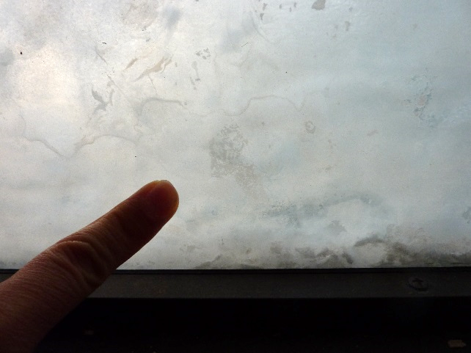CAN WIND CAUSE FOGGY WINDOWS?
After strong windstorms, home and building owners may be concerned with the performance of their multi-pane windows. They question if and to what extent the windows have been affected by the storm. It’s a valid question: when can windstorms affect the performance of window?
To answer this question, we must first understand how multi-pane windows are built and what loads these windows typically sustain on a daily basis.
Simply put, multi-pane windows consist of a window frame that holds insulated glass (IG) units. IG units consist of two or more layers of glass with moisture-less gas trapped between them.
The trapped gas has an important purpose: it conducts heat less efficiently than outside air, lowering the heating and cooling demand on the building interior. This also has the added benefit that the windows are resistant to fogging and frosting.
On a daily basis, multi-pane windows are subjected to a range of weather conditions. In particular, let’s focus on the temperature changes. In the evening, the window components (including the gas between the panes of glass) lower in temperature. During the daytime, windows will increase in temperature, particularly those exposed to direct sunlight. Like any material, the trapped gas will expand when heated. This leads to a daily cycling of pressures within the IG unit. In the industry this phenomenon is referred to as solar or thermal pumping.
As might be assumed, thermal pumping takes a toll on the windows. Over time, as the seals deteriorate, thermal pumping stresses the seals between the glass. Eventually small fractures will develop and grow. These fractures allow increasing amounts of infiltration and exfiltration of air between the panes.
Manufacturers recognize and expect this to eventually occur. In addition to the seal, some manufacturers also add a desiccant between the glass panes. The desiccant will mitigate any moisture that finds its way in the IG unit. However, the desiccant is limited and eventually it will become saturated, allowing moisture to condense on the inside of the IG unit. This phenomena will eventually occur in any IG window, regardless of whether or not the window has been subjected to one or multiple strong storms.
Now, knowing how IG windows are built and the loads that these windows see on a daily basis, we again ask the question: can a strong windstorm affect the performance of a good or like-new window? If wind-borne debris compromises the glass or seal, the answer is yes. Evidence will be visible on the surface as cracked or fractured glass. Care should be taken to inspect portions of the window where the view of the glass may be obstructed by the window frame.
In the case of windows in poor condition, it is also possible that wind forces may be the “straw that breaks the camel’s back.” In this case, factors to consider are the directionality of the wind, the location of the windows on the building, debris impact marks or gouges, and the time elapsed since the storm. These items will help in the determination of whether or not wind was a contributing factor or if the window seals failed due to natural weathering.
Time since the storm and the extent of the fogging can provide good insight as to whether or not a storm was related. After a seal has failed, it takes time for moist air to enter the space between the glass panes. Further, the development of condensation is dependent on the presence of moist air. Once moist air has entered the space between panes, there is a progression of fogging. It begins as light translucent condensation, progresses as mist with water droplets, and finally becomes a thick opaque white haze as the water evaporates and condenses repeatedly, leaving the minerals in the water behind (see the figure below). Note that this process takes a long time. In the earliest stages, when the white haze has not yet formed, test methods for determining whether or not moisture has infiltrated should be considered.
The answer to whether or not wind can affect the performance of a window can be complicated and a proper inspection is essential. Further, the effect of wind forces needs to be considered in context with other factors, such as window maintenance, material properties, and possible issues in the original manufacturing. There are also methods for addressing the moisture once it does ingress, but their applicability and limitations should to be considered and addressed for each individual case.

Carlos graduated from the UN of FL with a BS, MS, and PhD in Civil Engineering. He is a member of the American Association for Wind Engineering, the American Society of Civil Engineering, and the American Concrete Institute. Carlos has assessed damage to hundreds of roofs since joining Haag in 2012. He also served as a key developer of the Haag Certified Inspector-Wind Damage Course. His primary areas of consulting are structural evaluations and general damage assessment. He also works in the Haag Research/Testing laboratory, designing new test apparatuses and performing experiments and industry-accepted testing procedures. For Carlos’ profile and contact information, click here.





